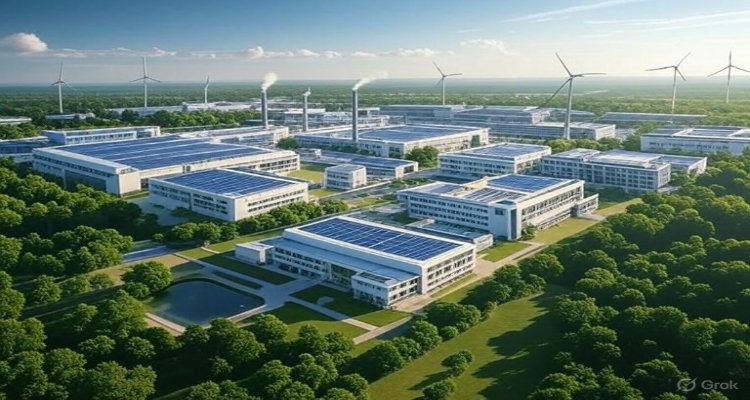Cloud Storage: The Hidden Environmental Toll
Uncover the real environmental cost of cloud storage—exploring its rising energy use, carbon footprint, expert views, and the urgent push for greener digital solutions.
The true environmental cost of cloud storage is rapidly escalating as global demand for digital services and AI-powered applications continues to soar, resulting in a significant and growing ecological footprint for our increasingly connected world.hivenet+2
Introduction: The Invisible Weight of the Cloud
Every time a photo is uploaded, an email sent, or a file backed up, invisible waves of data travel to distant servers—contributing silently to a global surge in energy use and carbon emissions. The convenience of cloud storage hides a profound environmental cost that is demanding urgent attention from both industry and society.zoolz+1
Context & Background: Cloud’s Rise and Its Energy Appetite
Cloud storage powers today’s digital infrastructure, enabling everything from streaming media to business collaboration. The U.S. leads with nearly half the world’s data centers, propelled by tech giants’ massive investments in infrastructure to serve AI, big data, and the insatiable appetite for digital information. By 2022, over half of all corporate data was managed in the cloud, and energy demands are climbing relentlessly, with data centers now consuming between 2% and 3% of global electricity—on par with the aviation industry’s emissions.greenly+5
Main Developments: Energy, Carbon, and Water—A Trifecta of Impact
The spiraling growth of cloud storage brings three intertwined environmental challenges—electricity usage, greenhouse gas emissions, and water consumption for cooling:
-
By 2030, data centers are projected to consume 8% of total U.S. electricity, up from 3% in 2022.hivenet
-
EU data center power use will rise to over 3% of the region’s electricity by decade’s end—rivaling emission levels from international aviation.cloudcomputing-news
-
The energy required to operate and cool servers is immense: cooling alone can account for up to 70% of a center’s power consumption.cc-techgroup
-
Storing 1TB in the cloud annually produces about 40kg of CO2 in the U.S., with variations depending on energy sources and location.cloudcarbonfootprint+1
-
The proliferation of AI applications is accelerating this trend: a single AI query uses up to ten times more energy than a standard online search.news.mit+1
Expert Insight and Public Response: Leaders Grapple with Sustainability
Scientists, analysts, and cloud industry leaders agree the strain is unsustainable—unless urgent changes occur:
-
Google, Microsoft, and Amazon are investing heavily in renewable energy, targeting 100% carbon-free operations by 2030.techmahindra+1
-
According to Goldman Sachs Research, data center energy demand could soar 165% by 2030, driven by AI and new services.goldmansachs
-
However, the pace of progress is under scrutiny. “Cloud providers care about sustainability because their key stakeholders care,” said Gartner analyst Ed Anderson, but the lack of standardized, transparent emission tracking hinders true accountability.techtarget+1
-
The EU’s Corporate Sustainability Reporting Directive now compels tens of thousands of companies to disclose their emissions, increasing pressure for clear action.techmahindra
Impact & Implications: What’s at Stake and Next Steps
If unaddressed, cloud storage’s environmental toll could jeopardize global climate goals, making digital habits a major factor in the sustainability equation:
-
The expansion of cloud storage and AI-driven workloads could strain power grids, increase electricity costs, and force more communities to choose between digital convenience and environmental resilience.goldmansachs+2
-
While public cloud infrastructure can reduce a business’s footprint compared to on-premises servers, true sustainability still requires optimizing workflows, responsible energy use, and migration to renewable-powered data centers.cloudcomputing-news+1
-
New cooling technologies, carbon tracking, and hardware innovation show promise for lowering the footprint of the digital world—but only if widely adopted and paired with user awareness and policy enforcement.cloudcarbonfootprint+1
Conclusion: Cloud Storage at a Crossroads
The real cost of cloud storage goes far beyond monthly service fees. It’s measured in megawatts, metric tons of CO2, and billions of gallons of water—costs borne by the planet and future generations. As demand grows, urgent collaboration between providers, regulators, and users is essential to ensure digital progress doesn’t come at the environment’s expense.zoolz+3
Disclaimer :This article is for informational purposes only and reflects the current state of research and industry practice as of September 2025. It does not constitute financial or legal advice.











